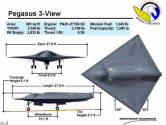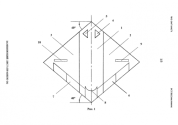It all comes back to this. Engines.
While China's caught up very quickly in aircraft engines of all types, particularly military ones, it still lags the US slightly to perhaps up to a decade.
US and China are both flying fuel combusting engines derived from last century. Combustion reaction engines will always be the primary limit to what we can do in aviation and there's no sight of anything revolutionary. People talk about flying saucers, anti-gravity this that and whatnot but if they existed, the world would undergo an industrial revolution we've never seen. Variable cycle engines will give these next generation aircraft a bit more push overall and a lot more efficiency - range. H-20 would have been designed around WS-15 I or II and intended for next gen engines like J-36. Even if it has the push and shape to go supersonic, it wouldn't be able to lob those heavy ALBMs we see strapped to H-6s. If there's a long and non-stealthy bomber that is designed to go supersonic and lob these large ALBMs strapped externally, it sure wouldnt be anywhere near stealthy. They can make it LO with effort but these two roles are so distinct.
There is no particular reason why a H-20 designed around stealth, range, and internal carriage of large hypersonic weapons, would need to be supersonic capable.
In fact I'm not even sure why the notion of supersonic performance for this aircraft is being touted at all.... and when the need for supersonic performance is omitted, the engine situation also becomes a fair bit simpler as well (variable cycle loses much of its attractiveness)
Wouldn't an air launched YJ-20 approach a maximum range of 2000km, and be able to be carried in an IWB of under 10m length?
Air launched YJ-20 is optimized for UVLS naval launch. It has certain fixed limitations on its payload size, onboard ECCM etc. Being a biconical hypersonic/aeroballistic weapon it also is not a hypersonic waverider glider or a hypersonic cruise missile.
We are talking about a high ender/larger air launched weapon. A more capable warhead, onborad ECCM etc are all a given.



